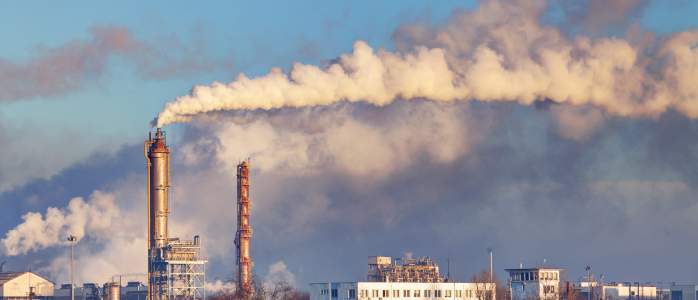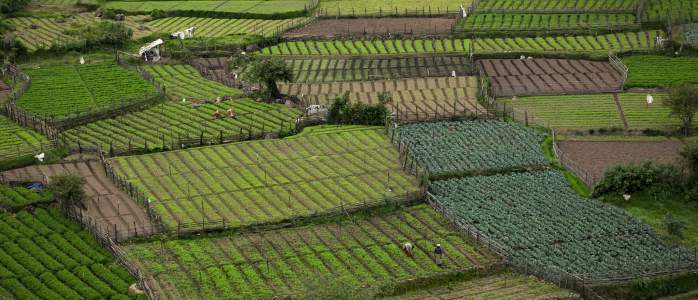



How are Indian states gearing up to meet the country’s plan to go net zero by 2070? India’s federal structure means that state governments must be equal players in the journey to decarbonise and transition to cleaner energy. For India to achieve its net-zero commitments, states need to chart their climate plans to reap the benefits of being first-movers in integrating a climate agenda into their economic aspirations.
Several Indian states, such as Gujarat, Kerala, and Maharashtra have already announced net-zero targets, but each comes with its unique challenges, opportunities, and economic context. One may be heavily industrialised, leading to an exceptionally high cost of decarbonisation, while another may be highly dependent on coal due to its industries and naturally occurring coal reserves, calling for a mitigation plan that places a special focus on just transition for the coal economy. Therefore, a one-size-fits-all approach will not help with climate change mitigation and adaptation plans.
The Council on Energy, Environment and Water (CEEW) has been working with a few such states to assist in drafting long-term net-zero transition plans by utilising extensive and thorough modelling exercises. The process involves multiple consultations with various state government departments, officials, experts, and policy analyses. Drafting decarbonisation strategies at the sub-national level brought to the fore challenges that need to be resolved in order to be effective.
Data discrepancies
Long-term projections of indicators like energy demand and carbon emissions need a solid foundation of historical data. Although historical data can be accessed publicly, there may be multiple data sources for a single variable, each citing a different data point. For instance, multiple sources exist for state-wise sectoral consumption of electricity, like the state Economic Survey, the Central Electricity Authority (CEA) Dashboard, the CEA General Review Report, and the Report on Performance of Power Utilities by Power Finance Corporation (PFC) Ltd. Often, these agencies use different methodologies, in turn leading to different estimations. Acknowledging these shortcomings, the Indian government set up a Standing Committee on Statistics (SCoS) to review the existing framework and results of all surveys under the National Statistical Office. A similar agency should be set up to review all the existing datasets across different sources and ensure uniformity.
Capacity building
The current state governmental focus is on developmental issues, such as income, health, education and sanitation. In order to deal with climate change, this focus needs to be realigned to include decarbonisation into the developmental aspirations of a state. Although climate change may seem like an environmental issue, it really is an economic challenge that presents unique opportunities to revamp a state’s economy. The cross-sectoral implications of climate change on the economy bring about novel challenges to government departments that need to be skilled to deal with them. The departments currently involved in decarbonisation plans and strategies are usually the energy or environment and climate change departments. All other government departments, therefore, need to be involved significantly and be equipped with the capacity and knowledge required to deal with it.
First, to optimise decision-making and communication within the bureaucracy for climate plans, a separate committee led by the chief minister, including high-ranking officials such as the chief secretary and principal secretaries, should be established. This top-down approach should aim to streamline processes, ensure commitment and buy-in, and facilitate efficient coordination between departments. Second, the states should also look to collaborate with regional universities under the government's guidance. This would develop an academic curriculum aimed at empowering local youth to effectively address climate change concerns across the state, city, district, and village levels. Excellent examples of these would be the Tamil Nadu Green Climate Company and Tamil Nadu's Chief Minister's Green Fellowship Programme.
Procedural impediments
Administrative reassignments result in the rescheduling of project deadlines due to a break in communication channels, which takes time to restore. This, in turn, influences the decision-making process, thereby impacting institutional memory. An independent committee or a Special Purpose Vehicle (SPV) could be set up with a designated set of members and a structured time frame to work on devising the policy from incubation to implementation.
States at the frontline
When dealing with the climate crisis, time is not an ally. It is, therefore, imperative to facilitate a smooth process of developing long-term decarbonisation plans at the state level. These plans will allow government departments to assess their progress periodically. Additionally, these should be specific and chart out the pathways for an economy-wide sectoral decarbonisation, the finance required for this transition, and transparently lay out the technology and capacity-building needs. Such plans also need to be reviewed periodically and updated based on new developments in national policies, technological advancements, and the state's aspirations. India’s states are at the frontline in the fight against climate change and must prepare in time.
Medhavi Sandhani was a Research Analyst, and Zaid Ahsan Khan is a Programme Associate at the Council on Energy, Environment and Water (CEEW), an independent not-for-profit policy research institution. Send your comments to [email protected].






Add new comment